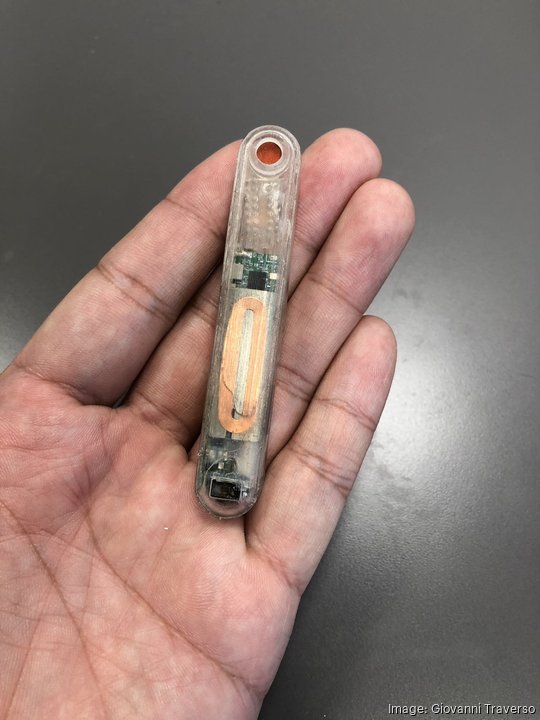
In an attempt to prevent deaths from opioid overdoses, researchers from Mass General Brigham and MIT are developing an implantable device that detects and reverses an overdose as it's happening.
The implant, called iSOS, uses sensors that continuously monitor a user’s respiratory rate, heart rate, body temperature and blood oxygen saturation. Once an overdose is detected, the iSOS releases a dose of naloxone, a drug known to reverse the effects of an overdose, directly into the user's tissue.
The lab, supported by the McGraw Foundation, developed an algorithm trained to recognize the signs of an overdose from the cardiorespiratory signals sensed by the device.
The iSOS is in prototype stage and is the first method of administering naloxone to a person without requiring a second person to be present. Currently there are just two ways to administer naloxone to a person who has overdosed: a nasal spray or an injection by a person with access to a dose of naloxone.
- Sign up for The Beat, BostInno’s free daily innovation newsletter. See past examples here.
“Part of the early work that we did was trying to characterize that overdose period and understanding the signals that are associated,” said Giovanni Traverso, the principal investigator based at MIT and Harvard. “So we trained this model that can take the signals related to breathing and heart rate, and you can much better define when an overdose is occurring and respond to it. So that's in the order of single minutes to identify and respond.”
Traverso says the prototype is similar in size to a large USB stick or a pacemaker, and as they continue their research, he aims to reduce its size.
During animal trials, the device was implanted in the abdomen of pigs, but Traverso said his team is waiting to learn more from human users before deciding where the implant would go in humans.
In early animal tests, the device was successful in detecting and preventing overdoses in 24 out of 25 pigs, according to Traverso. The next steps for the lab are to attract more funding and conduct more research into what types of opiates people are using, improve the technology and eventually move to pre-clinical trials prior to human testing.
“Our goal is to develop this system to be able to help patients who are suffering from opioid-use disorder ... during a very vulnerable period,” said Traverso.
The iSOS is implanted subcutaneously with a minimally invasive procedure under local anesthesia. Its wireless rechargeable battery can last up to 14 days and is recharged with a charging platform similar to those used for iPhones.
It also has a refillable drug reservoir that holds up to 10mg of naloxone — 10 times the dose given in emergencies so that the device can be used more than once without having to be disposed of.
The additional lifeline that a device such as iSOS wouldn't translate to higher opiate use, Traverso said..
“As far as I'm aware, the data doesn't support that,” said Traverso. “There have been several public health interventions for opiates, like the intranasal systems, and as far as I'm aware, opiate use has (not) increased as a function of that.”








